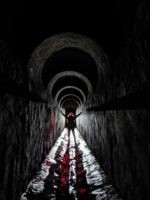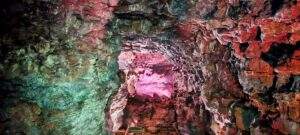Abandoned France: Paris Catacombs

Twenty metres underneath the heart of Paris lies a labyrinth of tunnels that hold the remains of 6 million people. These bodies of past Parisians were moved under the city into the tunnels of former quarries. There are over 200 miles of tunnels beneath the City of Love, the majority lined with centuries old skulls and bones.
To visit, it is recommended that you book in advance– you can purchase tickets up to 6 months before your visit. Tickets are €29 which includes an audio guide and you will be guaranteed a time slot and avoid the queues. Last minute tickets can be purchased for €14 if you want to save some money. This doesn’t include an audio guide, but you can still book a timeslot to enter.
To start your visit you will descend 131 steps down to the Catacombs. You then walk 1.5km of tunnels then climbing 112 steps back to street level. The bones, in places, are laid out very artistically and respectfully. The trip is an atmospheric one, with low lighting guiding your way around the route. Some might find the visit eerie but the majority will be fascinated by the history of the site. Some of the bones are over 1,200 years old! There is practically nowhere else like it in the world and it’s worthwhile to see the other side of Parisian history.
As the Catacombs became a tourist attraction, some aspects were added to entertain or shock. One being the sign on entry which says, “Arrête, c’est ici l’empire de la mort.” This translates in English as, “Stop, this is death’s empire.” Another highlight is a barrel shaped column in the crypt of passion that is made from skulls and ankle bones. It is both chilling and beautiful.The tour will generally lasts around an hour. The entrance is at 1, Avenue du Colonel Henri Rol-Tanguy and the exit at 21 bis, Avenue René-Coty.


Official warnings before you enter state “The tour is unsuitable for people with heart or respiratory problems, those of a nervous disposition and young children’.
History
In the late 18th Century, Paris officials realised that something needed to be done about the city’s traditional cemeteries. These had become breeding grounds for disease and were overflowing. Paris’ central cemetery Cimetière des Innocents had graves piled upon each other and remains piled haphazardly. By 1780, things had worsened. The bodies of people who had died decades or even centuries previously were exhumed and dumped into mass graves. Even perfume shops claimed they could not conduct their business due to the overpowering smell of decomposing flesh.
Rabelais, a 16th Century French writer, described the conditions in Parisian cemeteries in his works Pantagruel.
“A good city to live in, but not to die in, since the beggars of Saint-Innocent [cemetery] warmed their asses on the bones of the dead.”
In order to clean up the city of Paris, from 1785 to 1787, millions of remains were moved from the Innocents cemeteries to the underground network. City officials chose the tunnels of underground limestone quarries as the perfect spot to store the dead. The first written record of these quarries is from the town commerce record which stated that Paris had 18 “quarriers” in 1292. Extraction of stone from these quarries was used throughout the Middle Ages to build churches, the Louvre castle and the city walls. As these quarries were reinforced and designed to bring limestone above ground they were perfect for taking millions of dead beneath ground.
King Louis XV ordered in 1763 that burials could no longer happen in Paris. He wanted to go further but the Church intervened. They were against moving the famous cemetery as it brought high profits. His successor, King Louis XVI continued the campaign for moving the city’s dead. In 1780, after a period of heavy rain, the wall around the Cimetière des Innocents collapsed and rotting corpses spilled into neighbouring streets. Finally, the decision was made to relocate the dead. The removal of the 6 million bodies was completed at night to try and keep the citizens and the Church in the dark about the project.
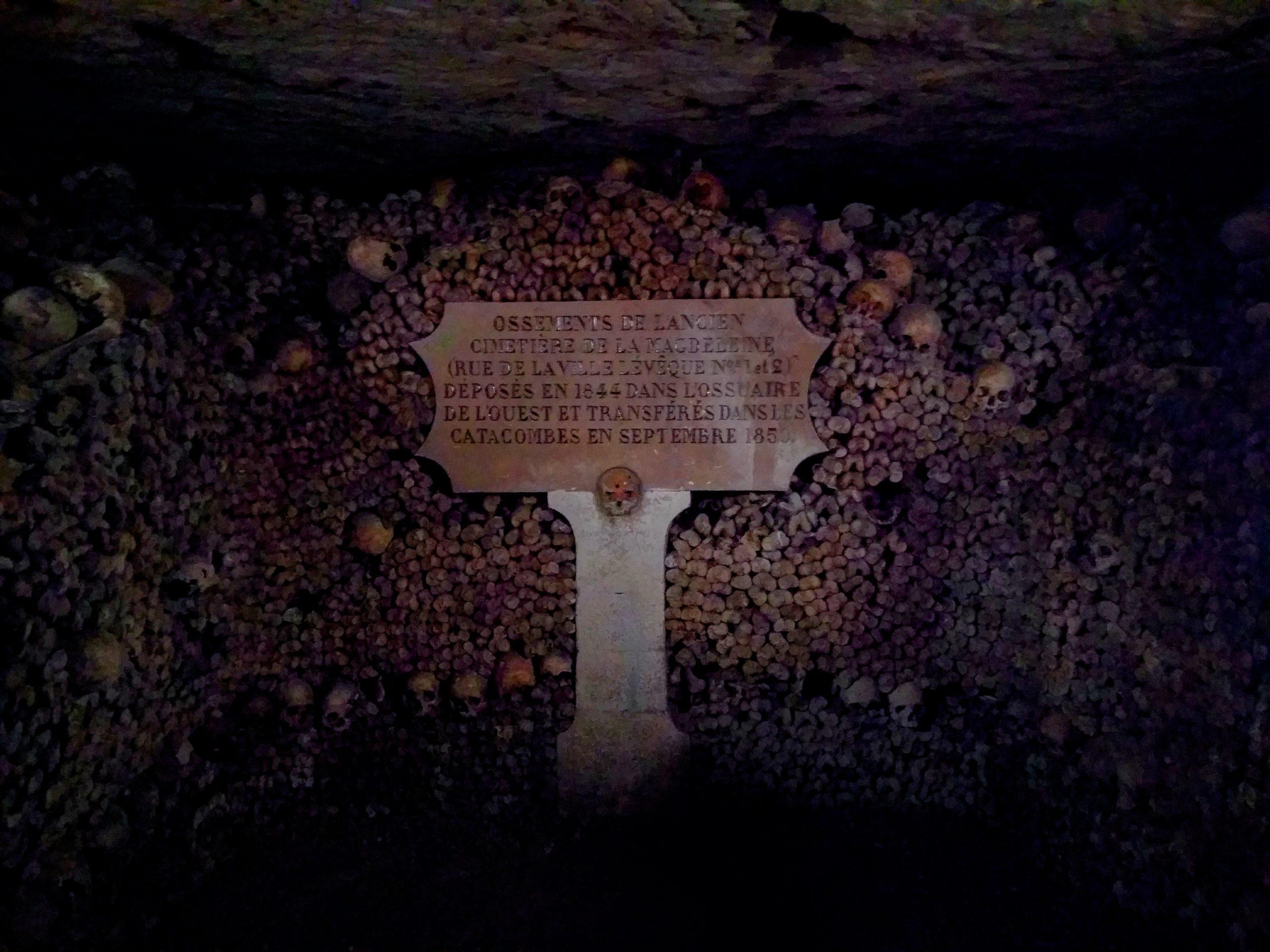

During WW2 and the Nazi invasion of the city the catacombs were utilised by both the Nazis and the French Resistance. The Catacombs made the perfect secret meeting spot for the Resistance. Away from prying eyes and not well known by many meant that the Resistance fighters could meet discreetly. The Nazis also realised the potential of the tunnels and after consolidating their power they built bunkers for their soldiers underground. There is still evidence of the subterranean invasion of the Nazis under Paris today. German inscriptions on the walls can be found in these bunkers. Some suggest that these underground bunkers were important hiding places for the Nazis, just as they were for Resistance fighters.
First Visitors
The Catacombs were first opened to the public in 1809, by appointment only. Visiting the site was popular amongst the French and foreign tourists. One reason for its success as a tourist attraction was because of the Nineteenth Century fascination with anything gothic. The site has had a number of high profile visitors in the centuries since it opened. In 1787, the future Charles X, visited the Catacombs with a group of ladies from the French court. The Austrian Emperor, Francis I, took a tour in 1814. Napoleon III also toured the burial site in 1860 with his son.
Interest exploded for the Catacombs after early photographs were published. One to note is Felix Nadar who photographed the “empire of death”. In the 1860s, photography relied on the natural lighting from the sun, but Nadar was known for his experimental and often daring photography. Artificial lighting was still in its infancy and Nadar faced the conundrum of how to light up the subterranean labyrinth.
The task was not a simple one. It is believed that it took Nadar three months to take his collection of photographs from the Catacombs. Armed with a wired series of Bunsen “batteries”, he was able to create enough light to take a photograph in the darkness. From the 1840s, Nadar had been experimenting with batteries invented by German chemist Robert Bensen in his studio. These batteries used a chemical reaction between metal and acid. In his memoirs, Nadar described how the radiance at night would “stop the crowd on the boulevard” and customers were drawn into his studio “like moths to light”. Nadar’s photographic collection brought worldwide fascination to the site and the middle-classes flocked beneath Paris.

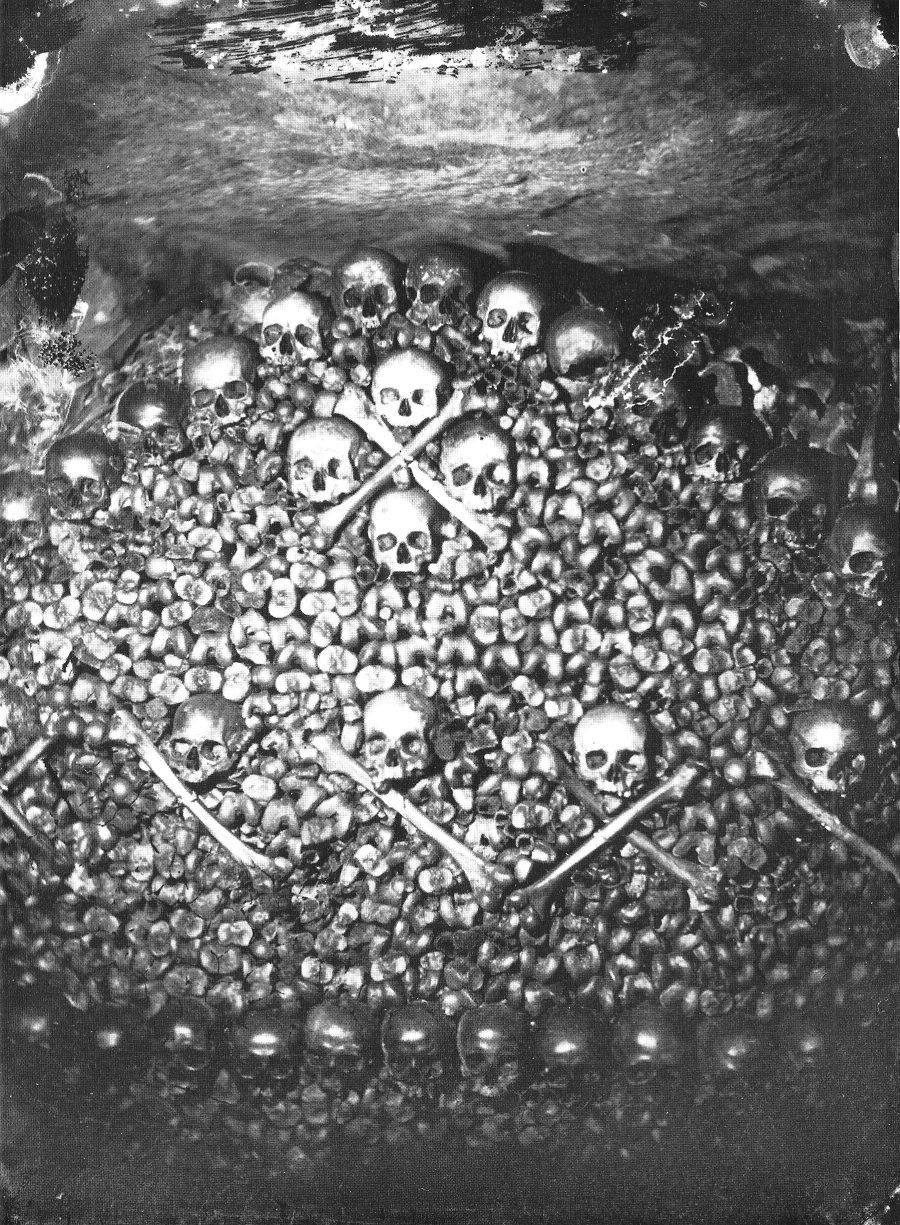
Urban Exploration of The Catacombs
Urban exploration of the Paris Catacombs is so popular there is even a name to describe the illegal explorers – Cataphile. There is a legendary fascination that surrounds the forbidden labyrinth. Only a small proportion of the underground tunnels are open to the public. The whole network of tunnels span 170 miles in total. Secret entrances can be found across the city of Paris. Some locals offer tips and guides to those brave enough to venture down amongst the dead. Most of the entrances are sealed off, but rumour has it that it can never be completely sealed off for fear of trapping a cataphile inside!
Cataflics are a team of dedicated Catacomb policemen who trawl the tunnels and hand out fines to trespassers they find. In 2004, whilst on patrol, cataflics broke through a false wall and entered a makeshift cinema. This included 20 stone-carved seats, a screen and projector. Along with a fully-stocked bar, lounge, workshop and restaurant. When police returned a few days later they found the equipment was gone and the space was empty. The only sign of remains was a note that said “Do not try to find us.”
The Catacombs are fraught with dangers. Being caught by the cataflics might be the least of your worries. There is potential for the subterranean tunnels to collapse, explorers to lose their way or planned escape routes to be blocked up by Parisian officials. The most famous death in the catacombs dates back to 1793. Philibert Aspairt, a gatekeeper, heard rumours of a secret stash of liquor hidden under a convent. He set off with only one candle to find it. His body was found 11 years later, just a few steps shy of the exit, holding a bottle of liquor. His death serves as a warning to explorers to bring extra torches on their travels underground. Aspairt is viewed as the guardian of the catacombs and his presence has been rumoured to be felt down the tunnels.
In 2017, two teenagers went missing inside the tunnels. The sixteen and seventeen year olds were missing for 3 days and were found after a 4 hour search by authorities. Paris Fire Service said “It was thanks to the dogs that we found them.” Both boys were treated for hypothermia in hospital after their ordeal.
Also in 2017, thieves used the tunnels to access a private wine cellar. They drilled through the limestone to steal €250,000 worth of vintage wine. Police say that over 300 bottles of wine were carried through the wine cellar into the tunnels and carried across the city. The thieves must have carefully selected this cellar to make off with such a valuable haul.
The fascination to explore the tunnels under Paris has a cult-like following. It is estimated that around 300 Parisians illegally visit the Catacombs every week. The system of tunnels are complex and whilst some parts have plaques or etchings indicating the name of the road above it is easy to get lost. Passages are often low and narrow and some sections are flooded. Due to the dangers, visiting these tunnels without an official guide has been illegal since 1955. Cataflics hand out €60 fines to anyone they catch. The police arrest up to 100 cataphiles a week, after a subterranean game of hide and seek.
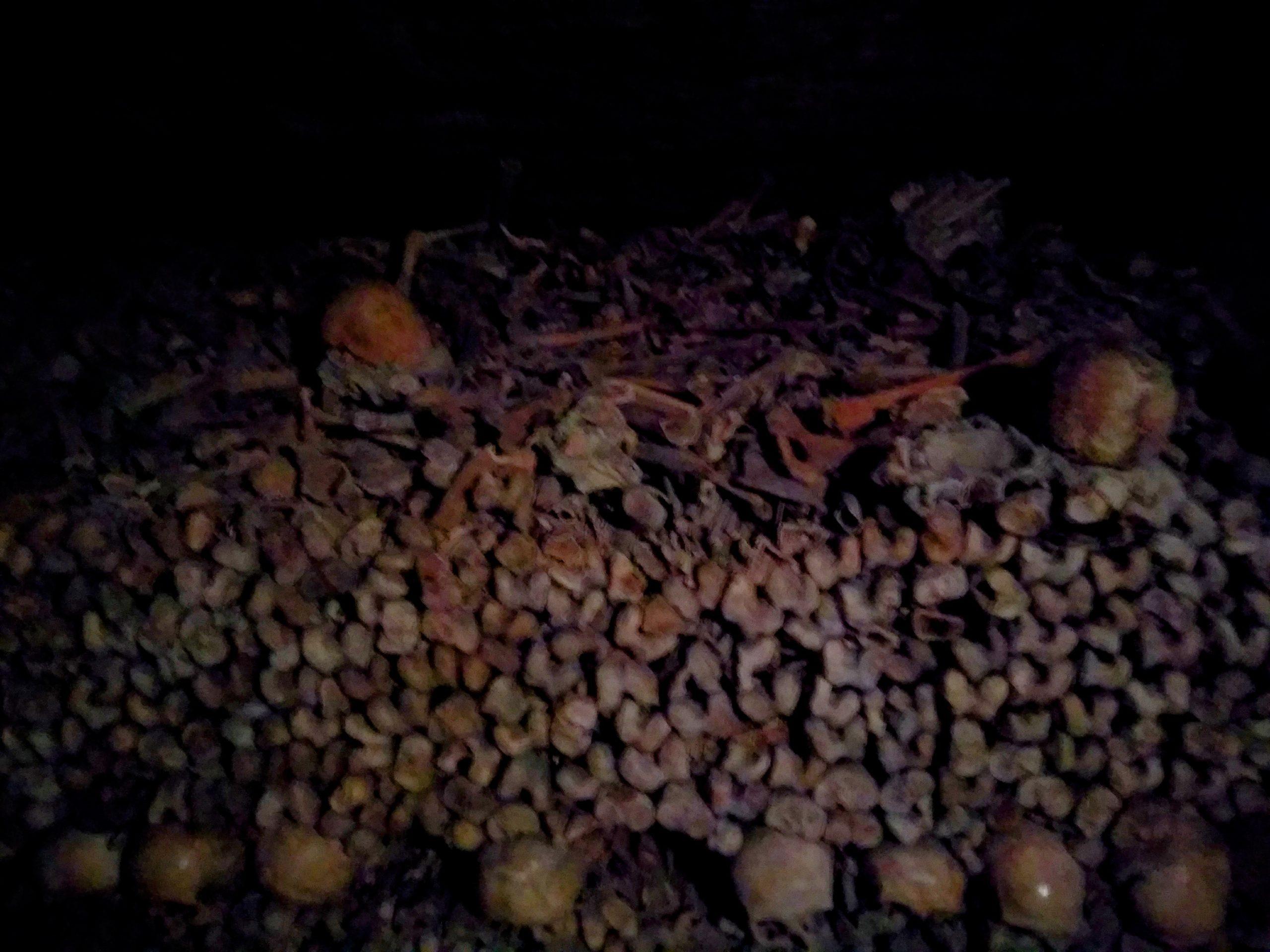

Top tips to visit:
- The Catacombs are kept at a constant 14℃, so it is recommended you wear long sleeves and a jumper even in the summer.
- The queues can get very long and don’t move very quickly so be prepared to arrive before the site opens.
- Wear comfortable and stable shoes, the ground is uneven.
- Only bring a small bag! Bags allowed inside can be no larger than 40x30x20cm. There’s also no cloakroom as the entrance and exit are at different sites.
This place will inspire your morbid curiosity and is well worth the entry price to visit. Even if you don’t think seeing the remains of the dead is your thing, many would say that there is no place like it in the world. Paris is known as the City of Love, but seeing this alternative side of the city is essential.
Last Updated on 23 May 2022 by Michael

